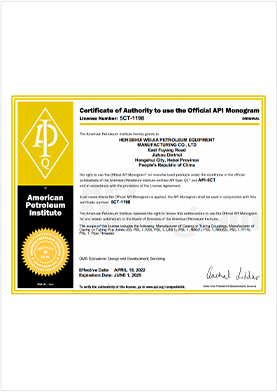- Afrikaans
- Albanian
- Amharic
- Arabic
- Armenian
- Azerbaijani
- Basque
- Belarusian
- Bengali
- Bosnian
- Bulgarian
- Catalan
- Cebuano
- Corsican
- Croatian
- Czech
- Danish
- Dutch
- English
- Esperanto
- Estonian
- Finnish
- French
- Frisian
- Galician
- Georgian
- German
- Greek
- Gujarati
- Haitian Creole
- hausa
- hawaiian
- Hebrew
- Hindi
- Miao
- Hungarian
- Icelandic
- igbo
- Indonesian
- irish
- Italian
- Japanese
- Javanese
- Kannada
- kazakh
- Khmer
- Rwandese
- Korean
- Kurdish
- Kyrgyz
- Lao
- Latin
- Latvian
- Lithuanian
- Luxembourgish
- Macedonian
- Malgashi
- Malay
- Malayalam
- Maltese
- Maori
- Marathi
- Mongolian
- Myanmar
- Nepali
- Norwegian
- Norwegian
- Occitan
- Pashto
- Persian
- Polish
- Portuguese
- Punjabi
- Romanian
- Russian
- Samoan
- Scottish Gaelic
- Serbian
- Sesotho
- Shona
- Sindhi
- Sinhala
- Slovak
- Slovenian
- Somali
- Spanish
- Sundanese
- Swahili
- Swedish
- Tagalog
- Tajik
- Tamil
- Tatar
- Telugu
- Thai
- Turkish
- Turkmen
- Ukrainian
- Urdu
- Uighur
- Uzbek
- Vietnamese
- Welsh
- Bantu
- Yiddish
- Yoruba
- Zulu
Exploring the Advantages of Steel Coupling in Construction Applications and Structural Integrity
Understanding Steel Coupling Essential Elements and Applications
Steel coupling is a critical component in various engineering and construction applications, serving as a pivotal link between two structural elements. With advancements in technology and materials science, the design and application of steel couplings have evolved significantly, meeting the demands of modern engineering practices.
What is Steel Coupling?
Steel coupling refers to a device or assembly that connects two shafts or other components in a mechanical system, facilitating the transfer of torque and rotational motion. In construction and civil engineering, couplings are often used to connect different segments of boring or piping systems, ensuring structural continuity and load distribution. The choice of material, primarily steel, is an important factor due to its high strength, durability, and resistance to environmental factors.
Types of Steel Couplings
There are several types of steel couplings, each designed for specific applications and requirements. The most common types include
1. Rigid Couplings These provide a solid connection between shafts, ensuring no misalignment can occur. They are commonly used in applications where precise positioning is crucial.
2. Flexible Couplings These allow for some degree of misalignment, making them ideal for situations where vibrations or shifts may occur. Flexible couplings can absorb shocks and reduce the transmission of vibration through the system.
3. Jaw Couplings Characterized by two hubs with interlocking teeth, jaw couplings provide flexibility while maintaining a strong connection. They are often used in electric motor applications.
4. Chain Couplings These couplings link shafts with a chain and sprocket mechanism, offering a robust solution for accommodating larger misalignments and providing shock absorption.
5. Sleeve Couplings Simple in design, sleeve couplings are used to connect two shafts end-to-end. This type is favored for its ease of installation and maintenance.
Advantages of Steel Couplings
The use of steel couplings presents several advantages, making them a preferred choice in many applications. Some of these include
steel coupling

- High Strength and Durability Steel couplings can withstand considerable mechanical stress and resist wear over time, ensuring a long service life.
- Corrosion Resistance Many steel couplings are treated or coated to improve resistance to rust and environmental degradation, which is vital in various settings, especially in construction
.- Versatility The adaptability of steel couplings allows them to be used in a wide range of applications, from industrial machinery to civil engineering projects.
- Cost-Effectiveness While the initial investment in high-quality steel couplings may be higher than that of inferior materials, their durability and performance often result in lower long-term costs.
Applications of Steel Couplings
Steel couplings find their use in numerous engineering applications, including
- Pipelines In the construction of water or gas pipelines, steel couplings are essential for connecting sections, providing a reliable and leak-proof link.
- Machinery and Equipment Couplings are found in various machinery applications, such as in motors and pumps, where they help transmit power effectively while accommodating for misalignment and movement.
- Bridges and Structures In civil engineering, steel couplings play a role in connecting structural members, allowing for the safe transfer of loads and enhancing the overall stability of bridges and buildings.
- Automotive Industry Steel couplings are critical components in different automotive systems, including driveshafts and gear assemblies, ensuring efficient power transfer.
Conclusion
Steel coupling is an indispensable aspect of modern engineering and construction. Understanding its types, advantages, and applications helps engineers and architects make informed decisions when designing and constructing reliable structures and machinery. With continual advancements in material science, the evolution of steel coupling technology will no doubt continue, leading to more efficient, robust, and sustainable applications in various fields. As industries strive for higher performance and sustainability, steel couplings will remain at the forefront, reinforcing their importance in both engineering and construction domains.
-
Tubing Pup Joints: Essential Components for Oil and Gas OperationsNewsJul.10,2025
-
Pup Joints: Essential Components for Reliable Drilling OperationsNewsJul.10,2025
-
Pipe Couplings: Connecting Your World EfficientlyNewsJul.10,2025
-
Mastering Oilfield Operations with Quality Tubing and CasingNewsJul.10,2025
-
High-Quality Casing Couplings for Every NeedNewsJul.10,2025
-
Boost Your Drilling Efficiency with Premium Crossover Tools & Seating NipplesNewsJul.10,2025







